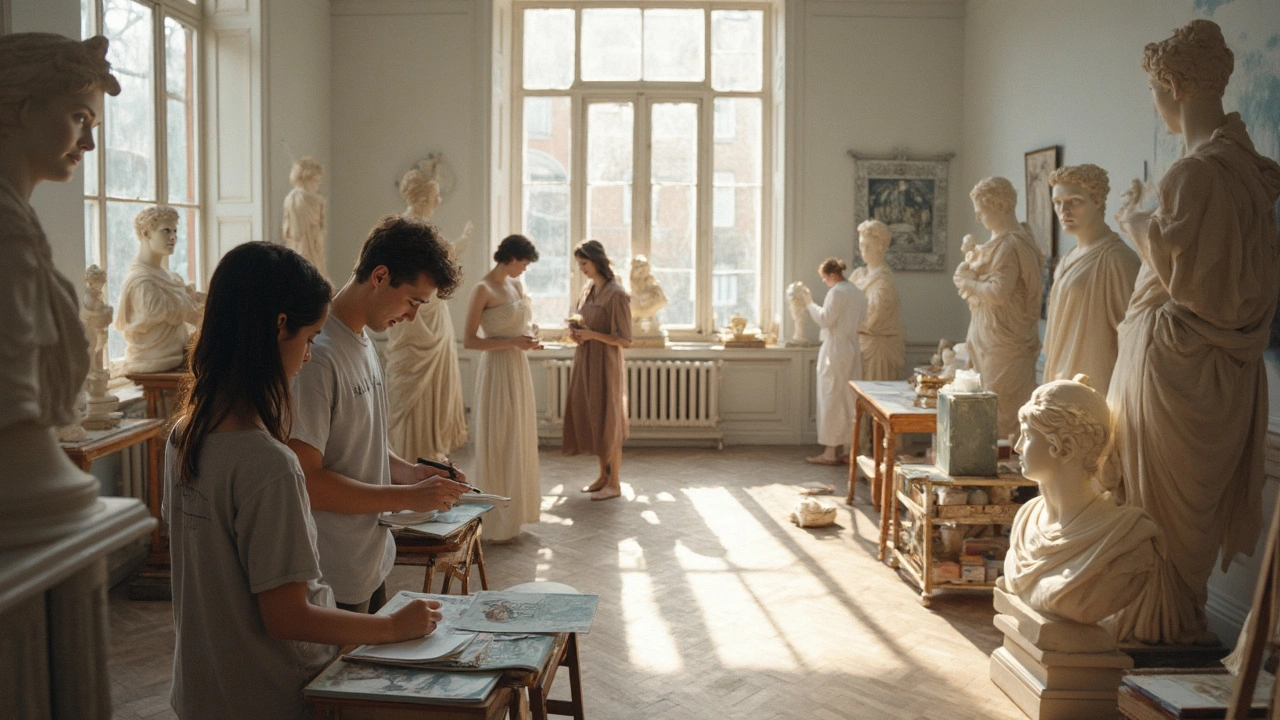Neoclassicism: Recognize Its Signs and Use Its Strength in Art & Design
Neoclassicism turned back to ancient Greece and Rome for a reason: people wanted order after the wild Rococo flourish. The result looks clean, balanced, serious, and often a bit heroic. If you want work that feels timeless and clear, Neoclassical rules are surprisingly useful.
How to spot Neoclassical art
Start with subject matter. Neoclassical paintings and sculptures use stories from Roman or Greek history and myth—heroes, civic duty, moral lessons. Faces are calm, poses are controlled, and gestures are purposeful. Composition favors symmetry and simple geometry: triangles, centered figures, and horizontal lines.
Look at technique. Painters used smooth brushwork with few visible strokes and a limited, cool color palette. Sculptors reached for idealized anatomy and clean surfaces that echo classical marble. Architects used columns, pediments, and strict proportional systems inspired by Palladio and ancient temples.
Famous names help you lock it in. Jacques-Louis David’s Oath of the Horatii and The Death of Marat show Neoclassical drama mixed with moral seriousness. Sculptor Antonio Canova made refined marble figures that feel both fragile and powerful. In architecture, Neo-Classicism appears in grand public buildings and early American civic design—think the U.S. Capitol and Jefferson’s love of classical forms.
Use Neoclassical ideas today
Want a quick practical guide? Strip excess ornament. Aim for clear shapes, balanced layout, and calm color choices like muted ochres, cool grays, and soft blues. In design, use grids and classical proportions—golden ratios or simple thirds—to build trust and clarity. In painting, practice clean contour drawing and reduce visible texture to focus attention on form and story.
If you’re a sculptor or 3D artist, study plaster casts of ancient statues to learn weight, balance, and drapery. For architects or interior designers, borrow column rhythms, cornice lines, and restrained decorative motifs to bring a civic or formal feeling without looking historicist or costume-y.
Neoclassicism also works as a visual shorthand for seriousness. Use it for civic projects, memorials, brand identities that need gravitas, or interiors that should feel calm and ordered. Pair it with modern materials—steel, glass, or concrete—to keep things fresh while keeping classical balance.
Finally, visit works in person when you can. Seeing David, Canova, or neoclassical buildings up close shows how simple lines create powerful effects. Once you can recognize the rules—subject, symmetry, clean finish—you can use Neoclassical tools to make clear, strong, and timeless work.




